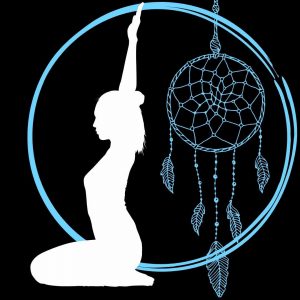Which yoga class is right for me?
Teresa Jackson, Head Yoga Instructor
 The benefits of yoga can be experienced with any style of yoga. However, students should attend specific classes depending on how they want to achieve these benefits. For example, stress release can be practiced through calming, quiet, gentle yoga practices. Similarly, a fast paced, heat building practice could also release stress. The most important factor in deciding which works best for you is to listen to what your body is telling you what it needs each day. Some days we need a more active and vigorous practice while at other times practicing gentle and slow paced yoga movement serves our body best.
The benefits of yoga can be experienced with any style of yoga. However, students should attend specific classes depending on how they want to achieve these benefits. For example, stress release can be practiced through calming, quiet, gentle yoga practices. Similarly, a fast paced, heat building practice could also release stress. The most important factor in deciding which works best for you is to listen to what your body is telling you what it needs each day. Some days we need a more active and vigorous practice while at other times practicing gentle and slow paced yoga movement serves our body best.
I encourage my students to try all styles of classes and to help decide which feels best for you and your body. However, it is still important to understand the differences between yoga classes. Let’s take a look at how classes that give us calming, relaxing, “slowing down” state of being in our body and mind compare to the ones that increase heart rate and build heat.
Hatha Yoga encompasses many general styles of yoga with a broad definition derived from the ancient yogic texts from thousands of years ago. These types of classes combine gentle movement with basic yoga postures. Practicing this specific style of yoga increases strength, balance, flexibility, concentration, and bone density while promoting calm and inner peace. Through breathing exercises in combination with physical poses, Hatha yoga seeks to cleanse and connect the mind and body. Pranayama (breathing) and the asanas (physical postures) are the most widely recognized parts of Hatha yoga. This style of yoga is rooted in more deeper practices including yogic lifestyle, meditation, and yogic philosophy.
Restorative Yoga classes focus on a slow-paced style originally developed for students recovering from an illness or injury. Restorative yoga is considered an ideal balance to hectic and stressful modern lifestyles. It is said that practicing this style of yoga helps to increase flexibility, stamina, concentration and mental clarity. This type of yoga class uses props such as blankets, bolsters and blocks to assist with poses that calm and promote healing in the body. Classes will usually include only five to eight postures that are held for longer periods of time up to five minutes or longer. The purpose of these classes is to relax and rest. The poses involved are calming and require minimal effort.
Iyengar Yoga is the root of Restorative Yoga. This type of class can help increase muscular strength, flexibility, stamina, concentration, and mental clarity. Classes are structured around gradual progression of the practice over time and are highly focused on finding proper alignment and breath connection within the poses. You can expect to use props to perfect alignment for each pose. These classes are also slower pace with the poses being held for longer periods of time.
Vinyasa Yoga is a ‘flow’ between poses. Similar to Hatha, Vinyasa has a wide definition and encompasses many different sub genres. Classes include breathing techniques that focus on the transition of the flow between poses. In Vinyasa, the synchronization of the breath and movement is an important part of the practice. A Vinyasa practice can increase muscle strength, flexibility, cardiovascular function, respiratory capacity, and improved bone density. This type of class maintains a more rapid flow of movement through different postures. The structure of Vinyasa flow will vary greatly from class to class since the definition of the style is so broad. Due to its faster class pace, many people are drawn to Vinyasa classes for its fitness applications.
Ashtanga Yoga is a subcategory of Vinyasa and follows the same predefined sequence in every class. Ashtanga is a rigorous style of yoga with a specific sequence of poses meant to challenge the mind, body, and soul. Classes are designed to purify the body and cultivate a
deeper connection to the self through asana practice. Ashtanga Yoga classes are usually high energy and physically challenging.
Whichever yoga class you decide to try first, always remember to listen to your body and honor what your body needs in each moment. Being mindful and aware of how a yoga class feels in your body is the best factor in deciding what style of yoga to practice. It usually takes three to four yoga classes to become comfortable and connected with a specific style so take your time if you are just beginning your yoga journey. Yoga is a lifelong lifestyle with no rush to the finish line.
Teresa Jackson is Head Yoga Instructor at The Studio at Cape Carteret holds a BA in Psychology/Sociology, along with certifications in 200 hour Traditional Hatha YTT, 300 hour Yoga Psychology YTT, 95 hour Children’s YTT, Trauma Informed Yoga, Warriors at Ease, Yoga for 12 Step Recovery and Shamanic Reiki Master.

